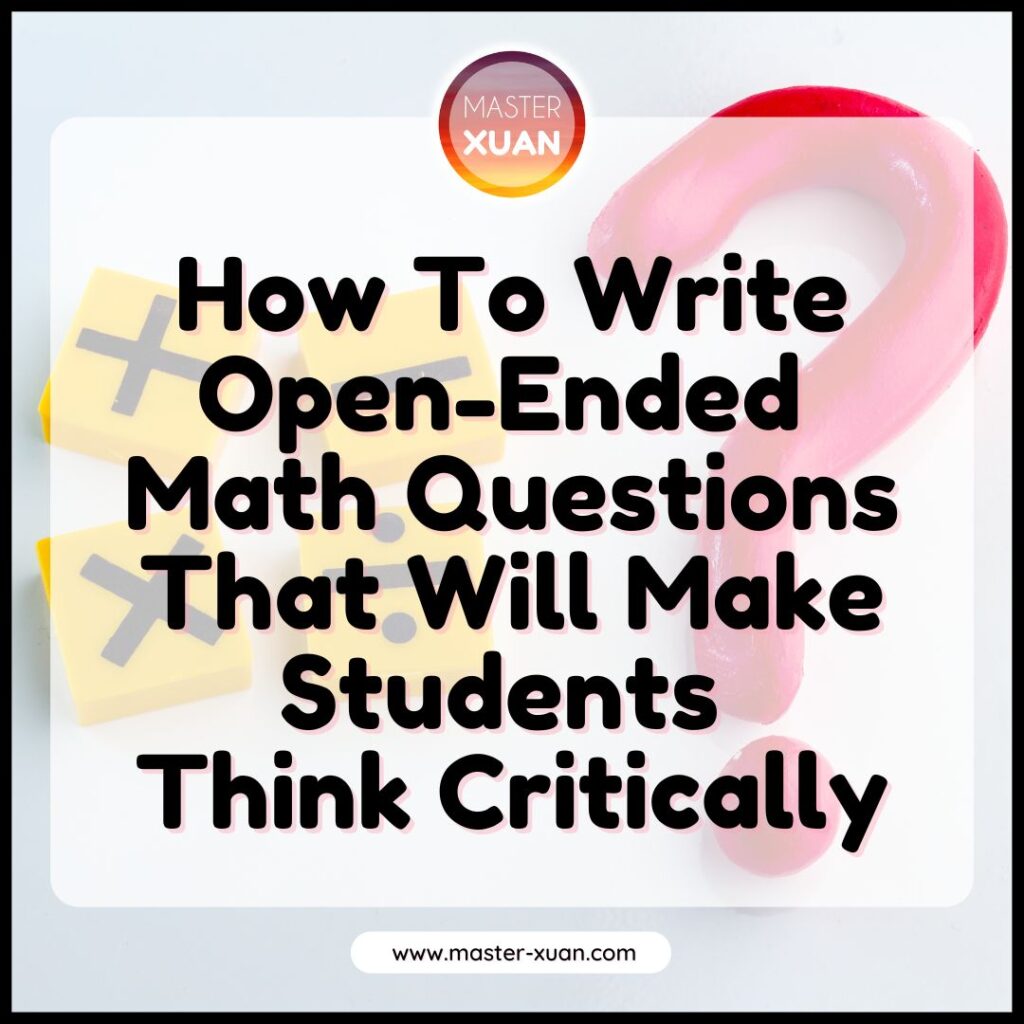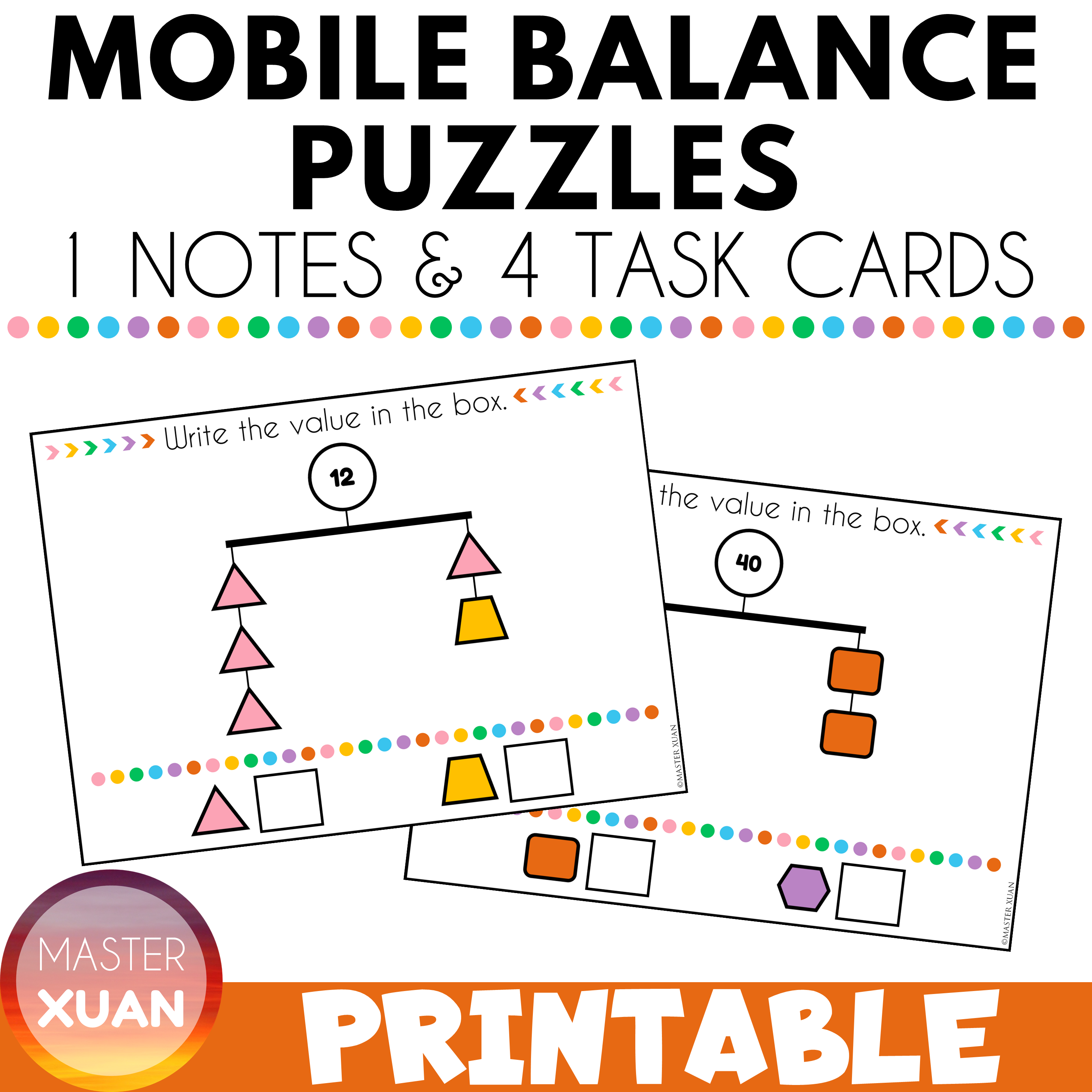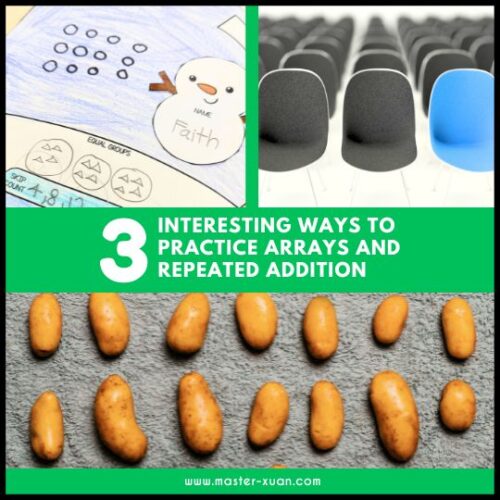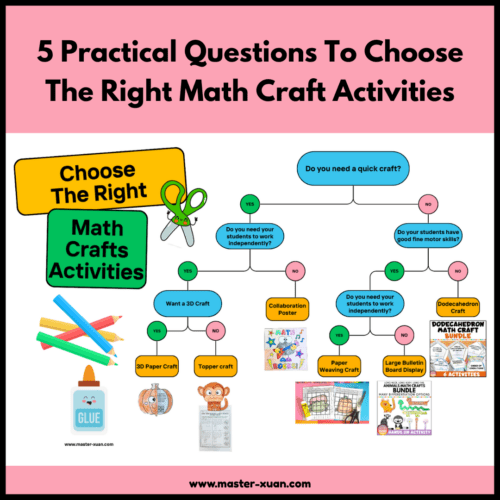Are you struggling to come up with open-ended math questions that challenge and engage your students? You’re not alone.
Many educators struggle with creating questions that go beyond basic recall and inspire deep, critical thinking.
In this blog post, we’ll explore the significance of open-ended math questions and how they can transform your classroom into a dynamic environment where students actively engage with mathematical concepts.
Whether you’re an experienced teacher or just starting, this guide will provide you with valuable insights to elevate your math instruction and make learning a more enriching experience for your students.
Remember, becoming an expert in writing open-ended math questions is like solving a complex equation – it requires practice and perseverance.
So get ready to up your math game and make learning a total win for your students!
The importance of open-ended math questions
Open-ended math questions are a powerful tool for enhancing math instruction and unlocking students’ full potential.
Unlike traditional, closed-ended questions that often have a single correct answer, open-ended questions encourage students to think critically, explore multiple solutions, and defend their reasoning.
This type of questioning fosters a deeper understanding of mathematical concepts and helps students develop essential skills, such as problem-solving, communication, and critical thinking.
When students are presented with open-ended math questions, they are challenged to go beyond simply recalling facts or applying memorized procedures. They must analyze the problem, devise their own strategies, and articulate their thought process.
This cognitive engagement not only strengthens their mathematical abilities but also boosts their confidence and enthusiasm for the subject.
Additionally, it can foster productive struggle, as outlined in this blog post: 5 Practical Tips To Foster Productive Math Struggle You Need To Know.
Open-ended questions allow students to showcase their unique perspectives and creativity, making the learning experience more personalized and meaningful.
Moreover, this type of questions have the potential to reveal valuable insights into students’ understanding.
By observing how they approach and solve these complex problems, teachers can gain a better understanding of their students’ strengths, weaknesses, and misconceptions.
This information can then be used to tailor instruction, provide targeted support, and foster a more inclusive and differentiated learning environment.
In essence, open-ended math questions are a powerful tool for both student learning and teacher assessment.
Understanding the characteristics of open-ended math questions
Open-ended math questions are characterized by their ability to elicit multiple correct responses or solution paths.
These questions are designed to encourage exploration, creativity, and critical thinking, rather than focusing solely on finding a single, predetermined answer.
One of the key characteristics of open-ended math questions is their flexibility. They often begin with prompts such as “Explain how…”, “Describe a situation where…”, or “Investigate the relationship between…”
These types of openings invite students to engage in deeper analysis, make connections, and develop their own reasoning and problem-solving strategies.
Another essential feature is their emphasis on the process rather than the final answer.
These questions are not concerned with finding the “right” solution but rather with understanding the student’s thought process, the strategies they employ, and the justifications they provide.
This focus on the problem-solving journey encourages students to think critically, communicate their ideas effectively, and learn from their mistakes.
5 Tips for generating open-ended math questions
Crafting effective open-ended math questions can be a rewarding challenge, but it’s a skill that can be developed with practice. Here are five awesome tips to help you generate questions easily:
- Start with a real-world context: Grounding your questions in relatable, real-world scenarios can make them more engaging and meaningful for students. Consider incorporating familiar situations, current events, or personal experiences that students can connect with.
- Encourage multiple approaches: Design your questions in a way that allows for multiple solution paths or strategies. This can be achieved by posing problems that have more than one correct answer or by asking students to explore the relationships between different mathematical concepts.
- Incorporate higher-order thinking skills: Open-ended math questions should go beyond simple recall or application of procedures. Incorporate prompts that require students to analyze, evaluate, or synthesize information, such as comparing, justifying, or generalizing.
- Provide scaffolding and support: While open-ended questions should challenge students, it’s important to offer appropriate scaffolding and support. This can include providing hints, offering guided questions, or breaking down the problem into smaller, more manageable steps.
- Encourage student reflection and communication: Encourage students to explain their reasoning, defend their solutions, and consider alternative approaches. This can be achieved by including prompts that ask students to describe their thought process, compare their work with others, or identify strengths and areas for improvement.
Incorporating real-world scenarios into open-ended math questions
One of the most effective ways to engage students and make open-ended math questions more meaningful is to incorporate real-world scenarios.
By grounding these questions in familiar contexts, you can help students see the relevance and practical applications of the mathematical concepts they are learning.
When designing open-ended math questions with real-world scenarios, consider drawing inspiration from students’ daily lives, current events, or local community issues.
For example, you could present a problem related to budgeting for a family vacation, calculating the cost of building a new playground, or analyzing the growth of a local business.
By making the questions relatable and relevant, you can spark students’ curiosity and encourage them to think critically about how mathematics can be used to solve real-world problems.
Another key aspect of incorporating real-world scenarios is to ensure that the questions are open-ended enough to allow for multiple solutions or approaches.
Encourage students to think creatively, make assumptions, and justify their reasoning.
This not only enhances their problem-solving skills but also helps them develop a deeper understanding of the underlying mathematical concepts.
Encouraging critical thinking with open-ended math questions
Open-ended math questions are powerful tools for fostering critical thinking and problem-solving skills in students.
By designing questions that go beyond simple recall or application of procedures, you can challenge students to engage in higher-order thinking processes, such as analyzing, evaluating, and synthesizing information.
One effective way to encourage critical thinking with open-ended math questions is to incorporate prompts that require students to explain their reasoning, justify their solutions, or compare different approaches.
For example, you could ask students to “Describe the steps you would take to solve this problem” or “Explain why your solution is the most efficient approach.”
These types of questions not only reveal students’ understanding but also prompt them to reflect on their own thought processes and communicate their ideas effectively.
Another strategy for fostering critical thinking is to present students with open-ended problems that have multiple correct solutions or approaches.
By allowing for flexibility in the problem-solving process, you can encourage students to explore alternative methods, consider different perspectives, and defend their choices.
This can lead to rich discussions, collaborative problem-solving, and a deeper appreciation for the nuances and complexities of mathematical reasoning.
Providing scaffolding and support for students when answering open-ended math questions
While open-ended math questions are designed to challenge and engage students, it’s important to provide appropriate scaffolding and support to ensure their success.
Scaffolding refers to the temporary assistance or guidance that teachers offer to help students navigate complex tasks and gradually develop their independence.
When presenting these questions, consider incorporating various scaffolding strategies to support student learning. This might include:
- Guiding questions: Offer a series of focused, step-by-step questions that lead students through the problem-solving process. These guiding questions can help students break down the problem, identify relevant information, and develop their own solution strategies.
- Modeling and examples: Provide students with model solutions or examples of how to approach similar open-ended questions. This can help them understand the level of detail and reasoning expected in their responses.
- Graphic organizers: Utilize visual tools, such as concept maps, flow charts, or tables, to help students organize their thoughts, make connections, and communicate their ideas more effectively.
- Collaborative learning: Encourage students to work in small groups or pairs to discuss and solve open-ended math questions. This collaborative approach can foster peer-to-peer learning, shared problem-solving, and the development of communication skills.
- Formative feedback: Offer timely and constructive feedback on students’ responses to open-ended questions. This can help them identify areas for improvement, refine their strategies, and build confidence in their mathematical abilities.
By implementing these scaffolding strategies, you can create a supportive learning environment that empowers students to tackle open-ended math questions with confidence and success.
Assessing and evaluating student responses to open-ended math questions
Assessing and evaluating student responses to open-ended math questions can be a nuanced and complex process, but it is essential for understanding student learning and providing meaningful feedback.
Unlike traditional, closed-ended questions with a single correct answer, open-ended questions allow for a range of valid responses, each with its own merits and areas for improvement.
When assessing open-ended math questions, it’s important to focus on the student’s thought process, problem-solving strategies, and the depth of their mathematical understanding, rather than simply the final answer.
Consider the following strategies for effective assessment:
- Develop clear evaluation criteria: Establish a set of criteria that outlines the key elements you will be looking for in student responses, such as the use of appropriate mathematical concepts, the clarity of explanations, the consideration of alternative approaches, and the overall quality of reasoning.
- Provide opportunities for self-assessment: Encourage students to reflect on their own work, identify strengths and areas for improvement, and engage in peer-to-peer feedback. This can help them develop metacognitive skills and take ownership of their learning.
- Offer detailed, constructive feedback: When providing feedback on open-ended responses, be specific and actionable. Highlight the strengths in the student’s work, identify areas for growth, and suggest strategies for improvement, such as clarifying explanations, exploring alternative solutions, or making connections to real-world applications.
- Use a holistic scoring approach: Rather than focusing solely on the final answer, consider using a holistic scoring rubric that takes into account the overall quality of the student’s work, including their problem-solving process, mathematical reasoning, and communication skills.
- Analyze patterns and trends: Carefully examine student responses to identify common misconceptions, areas of confusion, or emerging strengths. This information can inform your instructional planning and help you tailor your teaching strategies to better meet the needs of your students.
By employing these assessment strategies, you can gain valuable insights into your students’ mathematical understanding and provide them with the guidance and support they need to continue developing their problem-solving abilities.
Examples of open-ended math questions for different grade levels
Tailor the questions to suit the needs and abilities of students across various grade levels. Here are some examples to inspire your own question-writing:
Early Elementary (Kindergarten – Grade 2)
- Number Sense:
- There are 10 cookies on a plate. How many different ways can you share the cookies with your friends?
- You have 15 blocks. How many different things can you build with them?
- Geometry:
- What shapes can you find in the classroom? How are they alike? How are they different?
- Draw a picture using only triangles. What other shapes can you find in your drawing?
- Measurement:
- It’s your birthday. How can you measure how old you are? What other things can you measure?
- You have a piece of string. What can you do to make it longer? Shorter?
Upper Elementary (Grades 3 – 5)
- Number Sense:
- The product of two numbers is 36. What could the numbers be? Find as many pairs as you can.
- You have $10 to spend at the school store. What items can you buy? How much change will you get?
- Geometry:
- Draw a shape with four sides. What different kinds of quadrilaterals can you make?
- Design a playground. What shapes would you use? Why did you choose those shapes?
- Measurement:
- You want to build a rectangular garden. What are the different possible dimensions for a garden with an area of 36 square feet?
- How can you estimate the height of a tree without climbing it?
Middle School (Grades 6 – 8)
- Algebra:
- Write an equation to represent a real-world situation. Explain your reasoning.
- Create a word problem that can be solved using the equation 2x + 5 = 17.
- Geometry:
- Investigate the properties of different types of triangles. What patterns do you notice?
- Design a logo using geometric shapes. Explain the mathematical concepts you used.
- Data Analysis:
- Collect data about a topic that interests you. Create a graph to display your data. What conclusions can you draw from your graph?
- You are conducting a survey. Write three open-ended questions to gather information about your classmates’ favorite hobbies.
Remember, these are just a few examples to get you started. The key is to design open-ended questions that challenge your students’ critical thinking, encourage them to make connections, and allow for multiple valid solutions or approaches.
Resources and tools for creating open-ended math questions
Crafting effective open-ended math questions can be a rewarding but sometimes daunting task.
Fortunately, there are a variety of resources and tools available to help you generate high-quality questions and enhance your math instruction.
Online Resources:
- Online question banks and databases: Explore websites and platforms that offer curated collections of open-ended math questions, such as the National Council of Teachers of Mathematics (NCTM) Illuminations, or the Inside Mathematics website.
- Instructional design frameworks: Familiarize yourself with instructional design frameworks, such as the SOLO (Structure of the Observed Learning Outcome) taxonomy or the Depth of Knowledge (DOK) levels, which can provide guidance on crafting questions that target higher-order thinking skills.
- Technology-based tools: Explore digital tools and applications that can assist you in creating, organizing, and sharing open-ended math questions. Some examples include online question generators, interactive whiteboard activities, or collaborative platforms for task design.
- A.I.: Try asking ChatGPT and Gemini for more examples of open-ended math questions.
Note: When searching for resources, consider using keywords like “open-ended questions,” “higher-order thinking,” “inquiry-based learning,” “math education,” and “problem-solving.”
Offline Resources:
- Professional development workshops and webinars: Attend or participate in workshops, webinars, or online courses that focus on developing skills in writing open-ended math questions. Many educational organizations and teacher communities offer these types of professional development opportunities.
- Collaboration with colleagues: Engage in collaborative planning sessions with fellow teachers to brainstorm and share ideas. This can be a great way to learn from each other’s experiences and gain new perspectives.
- Inquiry-Based Learning literature often discusses the role of open-ended questions in creating a student-centered classroom. Books and articles on inquiry-based science or math education can provide relevant insights.
- Reflective practice: Regularly reflect on your own experiences and student responses to open-ended math questions. This can help you identify areas for improvement, refine your questioning strategies, and continuously enhance your math instruction.
By leveraging these resources and tools, you can build a robust repertoire of open-ended math questions that challenge and engage your students, ultimately fostering their mathematical understanding and problem-solving abilities.
Final Thoughts
In conclusion, incorporating open-ended math questions into your instruction is a powerful way to enhance student learning and engagement.
Design questions that encourage critical thinking, connect to real-world situations, and allow multiple valid answers.
This approach creates a dynamic, inclusive learning environment that helps students develop essential math skills.
In this article, we discussed the importance of open-ended math questions and what makes them effective.
We also shared strategies and tips to help you easily create these thought-provoking prompts.
We’ve provided tools and resources for using real-world scenarios and supporting students as they learn.
With these, you can become skilled at crafting engaging open-ended math questions.
Remember, improving math instruction with open-ended questions is an ongoing process.
It requires practice, reflection, and a willingness to adapt and grow.
By embracing this challenge, you can unlock your students’ potential and foster a love for math.
This love for math will benefit them throughout their academic and personal lives.
So, what are you waiting for?
Start exploring, experimenting, and unleashing the power of open-ended math questions in your classroom today!
Your students will thank you, and you’ll be well on your way to becoming a true master of math instruction.
Here is the pin that you can save to bookmark this post. Save to your Pinterest Board now! ↓






